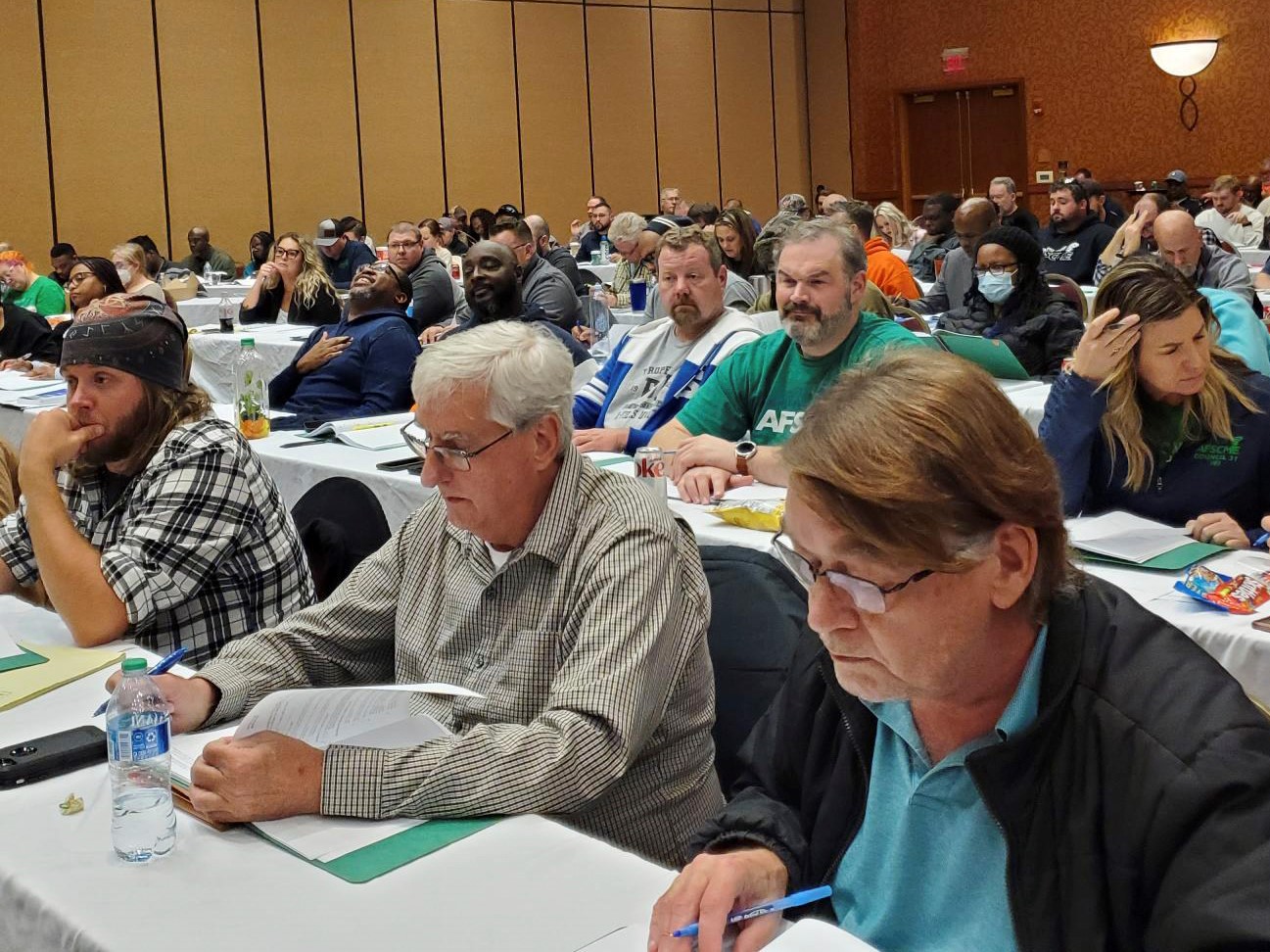State bargaining committee gears up for negotiations
 AFSCME members in state government are gearing up for contract negotiations for a new state of Illinois master contract, which covers some 35,000 state employees.
AFSCME members in state government are gearing up for contract negotiations for a new state of Illinois master contract, which covers some 35,000 state employees.
Council 31’s state bargaining committee, elected by union members in each local union, is one of the largest and most robust bargaining committees of any union in the country. All state locals are represented on the committee in comparison to their size, resulting in a body that is more than 200 members strong.
“We have a lot of very committed, experienced activists on this committee,” said Council 31 Regional Director Eddie Caumiant. “There’s a diverse range of employee classifications represented, and everyone is bringing their passion and knowledge to the table. It’s very exciting.”
Members on the bargaining team do not take the responsibility lightly. When they join the bargaining committee, they go through a training program to equip them with the knowledge and skills they’ll need at the negotiating table.
It takes a special kind of dedication to join the state bargaining committee. The meetings can be long and will likely go on for months. Committee members sacrifice time spent with their family and friends.
“I’m a first-time empty nester. My son has gone to college, and that affords me the freedom to give my all to this committee,” said Jennifer Howard, president of Local 2081 and an administrative staffer in the Department of Children and Family Services. “I want to be there where it all goes down. Those long nights I’ve heard about, bargaining over language—it excites me.”
For Howard, serving on the committee will allow her to better serve the needs of her members.
“The more you know about the contract, the more you can do for your members,” she said.
Rauner years cast long shadow
Veterans of state employment will remember former Gov. Bruce Rauner’s disrespect and vilification of public employees and their unions. Rauner’s enduring legacy will be his unwillingness to bargain with AFSCME members as he dragged out a contract fight for most of his 4-year term.
The years-long contract fight reached a boiling point when 81% of eligible AFSCME members in state government voted to authorize a strike for the first time in history. Due to a court order stymying Rauner’s game plan, state employees never ended up going out on strike, but the threat loomed large.
Angela Fry, a retired nurse practitioner II and former member of Local 29 at Shapiro Developmental Center, was on the bargaining committee at that time. She remembers those years with a shudder.
“It felt like we were at war,” Fry said. “When Rauner came to the table, they just put up walls against everything we asked for. They weren’t bargaining in good faith; they would come to the table with these pathetic proposals and we did everything we could to push back on them.”
AFSCME members relied on grassroots activism to fight back—and took that fight to the electoral arena in 2018, helping to defeat Rauner at the ballot box. That victory changed everything, as the bargaining committee was then able to negotiate a fair contract with the new administration of JB Pritzker.
State’s finances improving
The stability of the state’s finances has improved significantly since the current contract was negotiated. During Rauner’s term, he refused to sign a balanced budget for 793 days, cratering the state’s credit rating and piling up unpaid bills that totaled billions of dollars.
After the budget crisis was over, there was optimism about the health of the state budget–until the COVID-19 pandemic emerged in early 2020. States governments across the United States were on shaky fiscal ground as the pandemic took its toll on tax revenue streams, but six major Congressional stimulus packages helped shore up budgets.
With the combination of federal stimulus dollars and inflation at a 40-year high, total state revenue has consistently exceeded expectations. In 2022, total revenue reached $50.3 billion. But it’s not expected to stay there—as the Federal Reserve tries to tame inflation and federal COVID dollars run dry, revenue could creep downward in coming years.
“With this revenue, there are a lot of competing interests who want to be prioritized for funding,” said Council 31 Director of Research and Employee Benefits Martha Merrill. “Just because the state is in a more stable position doesn’t mean that it wants to spend more money on employees. We’re still going to have to demand what we deserve like we do at every bargaining table.”
There’s another reason that the state’s finances are exceeding expectations: the staffing crisis. With so many vacant positions in state government, the state’s payroll is smaller than it has budgeted for.
Bargaining gets underway in January
Proposals from local unions were received in mid-October and are being considered by the committee before it dives into bargaining in January.
One key issue in bargaining will be safety and staffing levels at state agencies, particularly at 24/7 facilities. Staffing levels at state agencies have nosedived since the beginning of the pandemic, and staff assaults and injuries are on the rise everywhere. There are almost 7,000 funded vacancies across all departments of state government.
“Our committee members are ready to get to work,” said Council 31 Executive Director Roberta Lynch, “but they will need the active and unified grassroots support of union members from one end of this state to the other to make sure that we continue to build on past progress and employees once again can secure the wage increases, benefit enhancements and expanded job rights they deserve.”